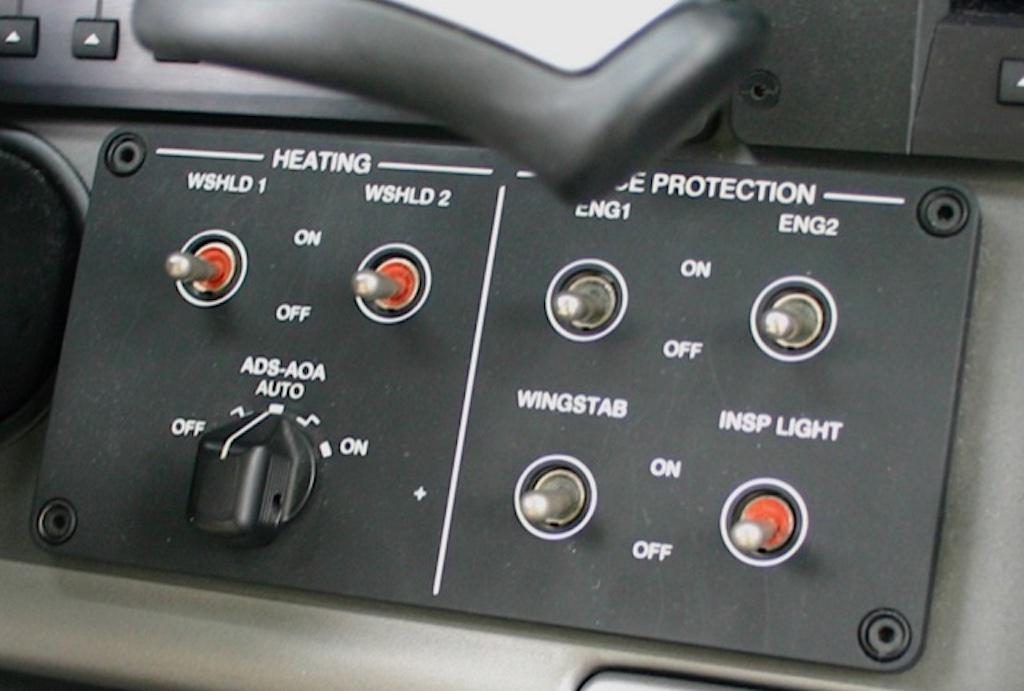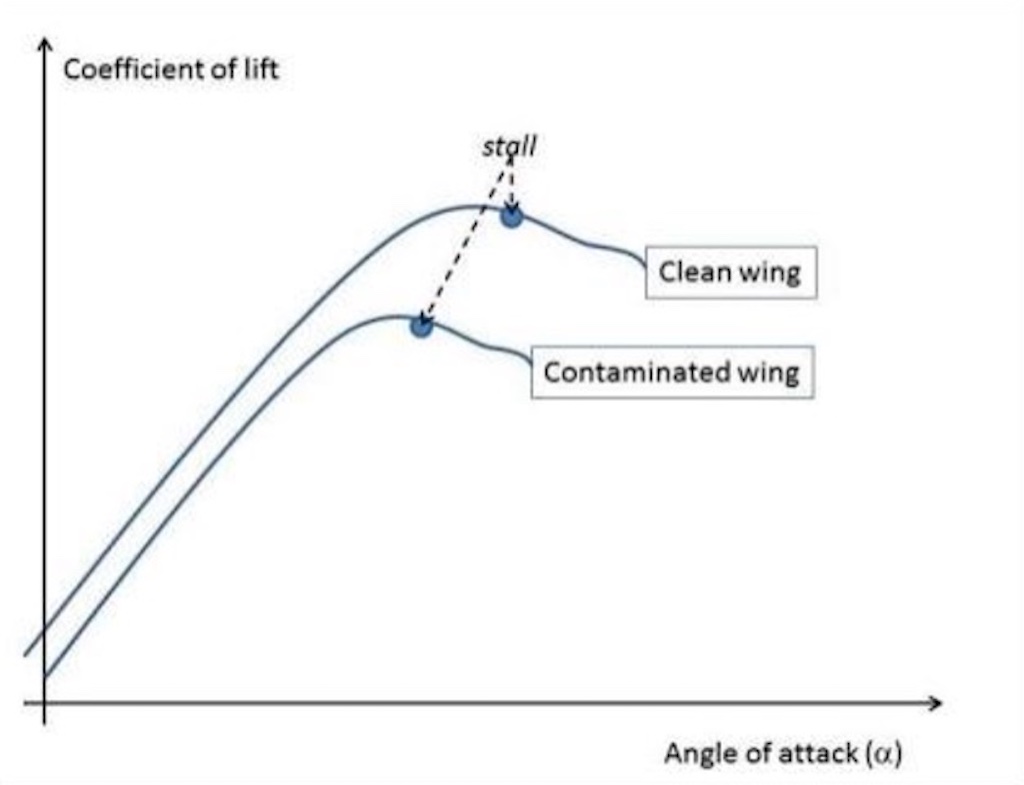
Embraer Phenom ice-protection panel.
In February 2014, 10 months before the Gaithersburg crash, an Embraer EMB-145 regional airliner had a hard landing in icing conditions at Memphis, Tennessee. There were no injuries to the 44 passengers on board. While the first officer was applying control inputs to adjust for a crosswind, there was a rapid roll to the right, a wing strike and substantial damage to the airplane. The airplane was examined about 40 min. after parking at the gate, and there was an accretion of ice on the leading edge of both wings.
The airplane was equipped with two ice-detector units, with sensors located on both sides of the nose. The airplane’s ice-protection system uses either bleed air or electrical power and is fully automatic. When either of the ice detectors detect ice, an advisory message "ICE CONDITION" is shown on the EICAS display, and a signal is sent to the anti-icing system valves to activate them to open, and a signal is sent to the full authority digital engine control (FADEC) to activate the automated engine icing thrust setting. The ice detectors are self-monitored and activate a caution message when a detector fails.
The last ATIS broadcast before the accident reported tower visibility of 1/2 mile, ceiling overcast at 400 ft. agl, temperature 1C, and dew point temperature -1C. An NTSB aircraft performance study showed that the airplane was in icing conditions for at least 20 min. before the accident. However, the ice-detection system never activated.
The study concluded that the right roll happened due to ice buildup, but the airplane did not experience a full stall. There was enough ice to create flow separation on one wing in the flare but not enough to affect control of the aircraft during the approach.
The ice-detection and anti-icing systems were tested, both on the airplane and at the manufacturer’s facility, and no faults were found.
The company’s airplane operating manual and SOPs said the crew was responsible for monitoring icing conditions and manually operating the ice- protection system if necessary. However, the company’s flight standards manager said manual operation of the anti-icing/de-icing systems was not emphasized in training.
The NTSB could not determine why the automatic ice-detection and protection system did not work. They concluded that the crew failed to adequately monitor the system.
The Memphis accident proved that while an ice detector can be useful, it is easy to over-rely on the system and that there is no substitute for the crew to actively monitor ice conditions and the status of protection systems.
Conclusions and Comments

In the Paris case, the BEA did not provide a succinct probable cause statement, but provided a concluding discussion. They said the ice on the leading edge of 9H-FAM did not fully break off when the de-icing system was used, and it reformed. The stall warning system (SWPS) was not configured to alert the crew that they were flying close to stall speed. The pilots either didn’t see the ice buildup or ignored it.
They then said that the aircraft’s landing performance penalties in icing conditions frequently caused crews to make risky approaches. “Commercial pressures associated with this type of operation may encourage crews not to comply with the proper procedures for the approach and landing in icing conditions by deactivating the de-ice systems as soon as they visually observe that the leading edges of the wings are free of ice,” wrote the BEA. In addition, “The crews who have to fly in icing conditions are then faced with difficult choices: either refuse to carry out the flight, or accept a very high probability of diversion, or lastly accept a deviation from procedures and take the risk of landing with a contaminated aircraft.”
As with the NTSB, the BEA recommended ice detectors on all EMB-500 Phenom 100 aircraft. The Phenoms equipped with a Garmin G3000 avionics suite already have ice detectors, and Embraer issued a service bulletin in October 2019 that permitted installation of an ice detector on the other Phenom’s that have the older G1000 suite. As of November 2021, 39 out of 376 Phenom 100’s had ice detectors installed.
They also recommended that operators pay more attention to the performance limitations of the aircraft when choosing the type of aircraft for each mission, and that the European Union Aviation Safety Agency (EASA) revise certification criteria to include icing performance issues that are hard for crews to manage.
From my perspective, it appears that the Paris crew was put in the position of choosing between having to land without using their de-icing equipment or failing to deliver their passenger to his intended destination. Furthermore, this has been a common dilemma for crews.
Better training, ice detectors, and more conservative and safety-oriented flight planning should all help to prevent this type of accident. I would add the following simple rules:
- There is no substitute for disciplined adherence to flight operations manual limitations, procedures and warnings.
- It is always necessary to monitor ambient temperatures and moisture.
- It is dangerous to dispatch a flight to a destination with forecast icing conditions when you know the airplane cannot land with the de-icing equipment on.
Factors In Ice-Induced Hard Landings, Part 1: https://aviationweek.com/business-aviation/safety-ops-regulation/factor…
Factors In Ice-Induced Hard Landings, Part 2:
https://aviationweek.com/business-aviation/safety-ops-regulation/factor…


